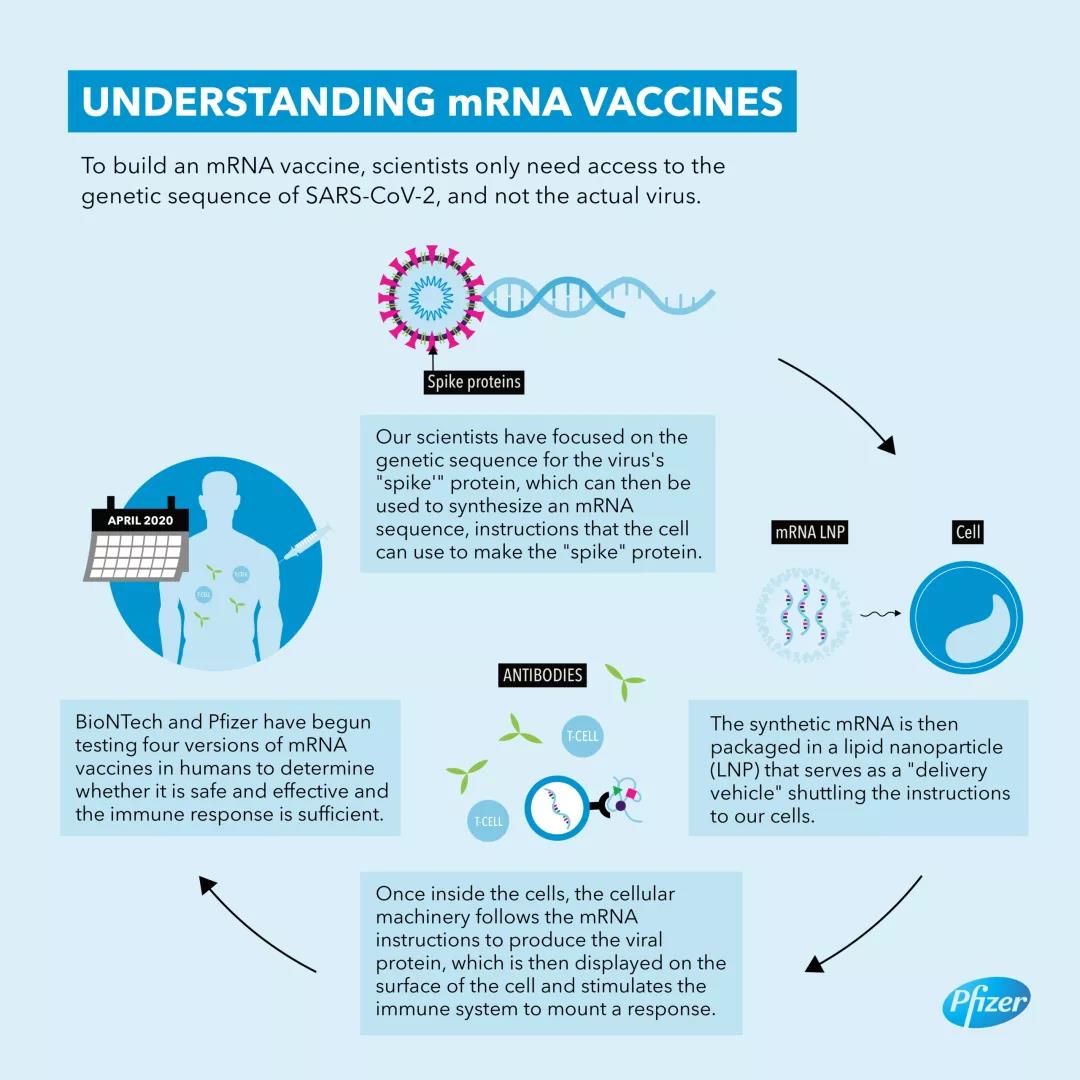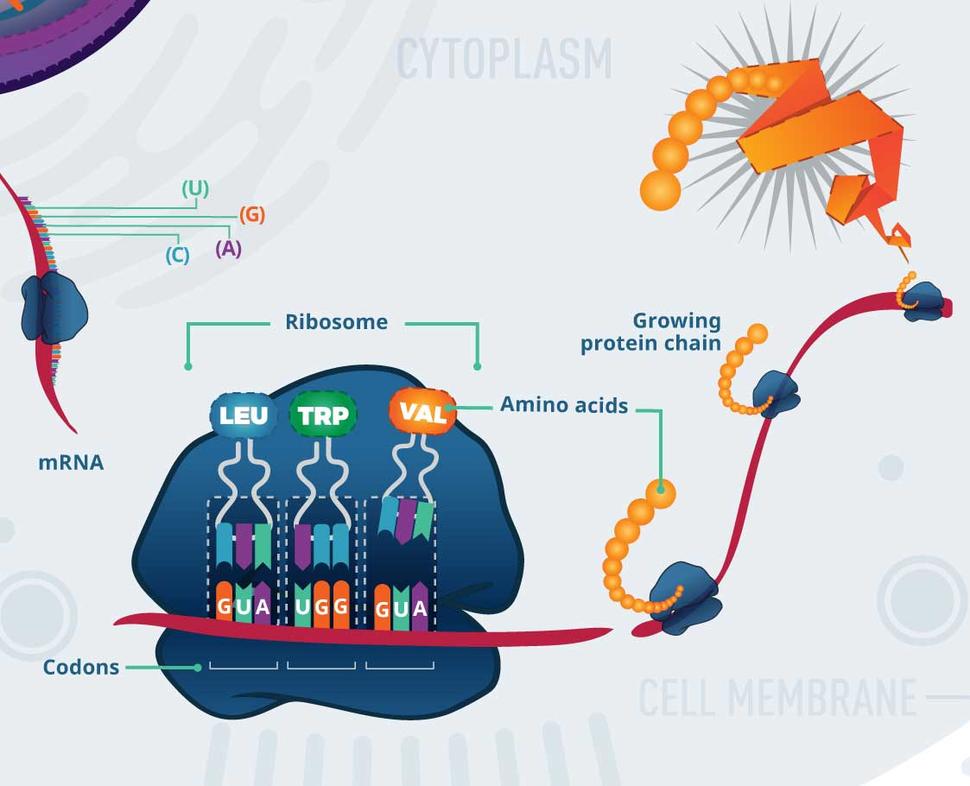

Other strategies such as protein-based or inactivated vaccines also require chemicals and cell cultures to produce. Safety: Unlike live-attenuated or viral-vectored vaccines, mRNA is non-infectious and poses no concern for DNA integration-mainly because it cannot enter the nucleus which contains DNA. What are the advantages over other vaccine strategies? If you are infected with SARS-CoV-2, your immune system recognizes the same spike protein and can quickly induce an immune response to fight the virus.
#Mrna infographic how to
Your immune system sees the protein and learns how to make an immune response against it. After injection, the cells in your arm muscles pick up the mRNA, make the protein, and display it on the cell's surface. SARS-CoV-2 vaccines include instructions to make one portion of the virus (the spike protein) that is harmless by itself. Messenger RNA (mRNA) provides a recipe that your cells can use to make proteins. It does not store any personal data.What is mRNA, and how do mRNA vaccines work? The cookie is set by the GDPR Cookie Consent plugin and is used to store whether or not user has consented to the use of cookies. The cookie is used to store the user consent for the cookies in the category "Performance". This cookie is set by GDPR Cookie Consent plugin. The cookie is used to store the user consent for the cookies in the category "Other. The cookies is used to store the user consent for the cookies in the category "Necessary". The cookie is set by GDPR cookie consent to record the user consent for the cookies in the category "Functional". The cookie is used to store the user consent for the cookies in the category "Analytics". These cookies ensure basic functionalities and security features of the website, anonymously. Necessary cookies are absolutely essential for the website to function properly. To learn more about how LipidBrick® IM21.7c can opens new possibilities to improve your LNP formulation, please visit: The intrinsic properties of the LipidBrick IM21.7c imparts an overall positive charge to the formulated LNP to enable a wider in vivo biodistribution and reduce liver accumulation, which can improve drug potency, safety, tissue targeting, and formulation stability compared to current generation cationic lipids.Īs an innovator in the delivery field, Polyplus’ cationic lipids are also available without intellectual property (IP) constraints, providing a simpler and more cost-effective manufacturing route for drug developers to meet the growing demand of the mRNA therapeutics market while also broadening the scope of LNP usage to other biopharma applications. Of the LNP lipid components, the cationic lipids play a crucial role in modulating the LNP properties including LNP stability, tissue selectivity, cellular uptake, immunogenicity, and more.

Polyplus’ new infographic outlines the key steps for successful mRNA vaccine production, which encompasses mRNA manufacturing using their plasmid engineering services and LNP formulation process with their novel LipidBrick® IM21.7c cationic lipids optimized for mRNA delivery. A deep understanding of the formulation steps and microfluidic mixing are critical to scalable, reproducible, and high-quality LNPs production. The resulting LNP drug product can then be processed further, purified, and analyzed downstream. The mRNA vaccine manufacturing process uses microfluidic systems, where the synthesized mRNA and the lipid mixtures are homogenized within a laminar flow to induce mRNA-LNP self-assembly. LNPs are composed of different lipid species including cationic and/or ionizable lipids, structural phospholipids, PEG-lipids, and cholesterol. LNPs serve as non-viral delivery vehicles that encapsulate and transport mRNA into target cells, where the mRNA can be released and translated by cellular machinery to produce the protein of interest that will elicit an immune response. Lipid nanoparticles (LNPs) play a crucial role in the development and manufacturing of DNA and RNA therapeutics including the Pfizer-BioNTech and Moderna messenger RNA (mRNA)-based COVID-19 vaccines.


 0 kommentar(er)
0 kommentar(er)
